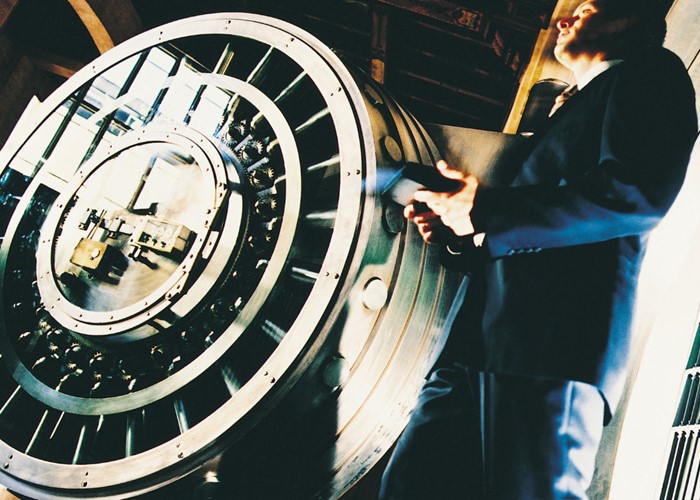Five ways to increase your savings

Whatever your goal, if you're struggling to save, check out our top tips to help!
Saving up a substantial sum of money - perhaps for a wedding or as a deposit on your first home - can be a real struggle. And according to a YouGov survey*, couples are delaying getting married and starting families simply because they can’t afford to do so.
In fact, four out of 10 young adults have said they won’t settle down until they can buy their own home, and a further 7% have put off marriage because they can't afford to buy a property or are saving up for one.
So if you are desperately trying to build up your savings, here are some top tips to help!
Related how-to guide
Build up your savings
Here's how to get into the savings habit, find forgotten money, work out the real value of a savings rate and build up that emergency savings pot.
See the guide
1) Get a better savings account
Related how-to guide
Build up your savings
Here's how to get into the savings habit, find forgotten money, work out the real value of a savings rate and build up that emergency savings pot.
See the guideFirst things first. If you want to build up a decent nest egg, you need to have a decent savings account. Whatever you do, don’t leave your cash languishing in a savings account paying a pitiful rate of interest.
Admittedly, interest rates on savings accounts aren’t particularly inspiring right now. But that’s no excuse for not shopping around and finding a better account.
If you’re prepared to lock up your funds for a year or more, you could consider a fixed rate bond. The Tesco Bank Fixed Rate Saver, for example, offers an interest rate of 3.40% for the first year. However, you won’t be able to access your savings during that time. To open the account, you’ll need a minimum deposit of £2,000.
If you’d prefer to be able to access your savings, the top paying easy access account is the Nationwide MySave Online Account . This pays 3.05%, including a bonus rate of 1.51% for the first year. You'll need a minimum deposit of £1,000. However, you can only make one penalty-free withdrawal with this account.
Alternatively, the Santander eSaver pays 3% including a variable bonus of 2.5% for 12 months, while the ING Direct Savings Account (my personal favourite) pays a fixed rate of 3% for one year! You'll only need £1 to open either account and you will have unlimited withdrawals.
You might also want to consider a regular savings account targeted specifically towards first-time buyers, if your aim is to save for house deposit. Several lenders offer this type of account and often they come with extra benefits such as fabulous sounding cashback offers. However, personally, I’m a little wary of these accounts.
The NatWest First Home Saver account, for example, offers you up to £5,000 cashback if you open an account with £100 and set up a monthly standing order of at least £50. But the major drawback to this account is that to get the full amount of cashback, you will need to have saved up a pretty hefty £50,000.
What’s more, you’ll need to take out a mortgage with NatWest. So this means you’re probably not going to be getting the best deal on your mortgage. And if that’s not enough to put you off, this account only pays an interest rate of 1%! Rubbish!
That said, the First Home Saver account from Santander offers a much more tempting interest rate of 5% (providing you pay in no less than £100 and no more than £300 per month). You won’t have to take out a mortgage with Santander either, but you will need to attend a mortgage interview.
If taking out an account targeted towards first-time buyers does appeal, however, make sure you read the terms and conditions carefully. And if you’re being asked to sign up to a mortgage with the same lender, I’d consider putting your savings elsewhere.
2) Draw up a budget
If you’re looking to save more money, one of the best ways to go about it is to get budgeting. This is a really great way to take control of your finances.
Related how-to guide

Set a budget and stick to it
Learn how to successfully squeeze your budget.
See the guideA good first step is to set up a spending diary – in other words, a list of what you spend where. You can do this using the free spending tool, Tracker, at lovemoney.com. If you register your accounts, every time you make a purchase – no matter which bank account or credit card you use – the tool will record it for you, and then allow you to categorise all your transactions so you know exactly what you're spending your money on every month. Alternatively, just make a note of everything you spend on paper.
Once you’ve got to grips with your spending habits, you'll should be able to see a list of all your monthly outgoings and earnings, and will know the average amount you are spending on different items each month. Then, you can use this information to set yourself a budget.
Alternatively, use this statement of affairs calculator or this budgeting calculator from the FSA. Simply enter your figures in the boxes provided to view an instant snapshot of your household budget and personal balance sheet. Make sure you don’t leave anything out when you’re doing this – include everything from birthday presents, to your everyday coffee.
You can find out more about budgeting in How to budget in five simple steps.
3) Make cutbacks
The next step is to see whether you can make any cutbacks anywhere. For example, are you spending a ridiculous amount on your food bills? If so, perhaps you could drop a brand, or start shopping at a deep discounter such as Lidl, Netto and Aldi.
Related how-to guide
Cut your food bills
As food prices continue to rise, here's some handy ways to keep your food bills under control.
See the guideAlternatively, maybe you could cut down on your socialising, or start bringing in your own lunch to work, or cancel your gym membership.
You may be amazed how even cutting down on the little things can soon add up. And you can put all that spare cash into your savings account.
4) Get switching
Another great way to save some pennies is to see whether you can get a cheaper deal on essentials such as your gas and electricity tariff. In fact, you could save as much as £700 simply by shopping around and switching utility provider.
Of course, if you’re currently living in rented accommodation, your landlord may not allow you to switch energy provider. But there are plenty of other financial products you can save money on – such as your car insurance, your mobile phone bill, and your broadband.
All it takes is a little time to hunt out a better deal - the savings will be well worth it!
5) Boost your income
If you’re still struggling to put enough money aside, see if you can boost your income! There are numerous ways of doing this.
Related how-to guide
Make some extra money
It’s easy to increase your income using these tips.
See the guideFor a start, every time you shop online, make sure you use a cashback website and a cashback credit card. These are great ways to earn money back as you spend.
And why not have a good clearout and see if you can get rid of some of your old junk and sell it. After all, what better time to get rid of your unwanted clutter in preparation for your new home!
Auction sites such as eBay, eBid and Amazon are the way to go for your best items - simply post a clear photo and let the bidding begin. Other sites to check out include Gumtree and Preloved. It's free to place an advert on either of these sites.
*Commissioned by the National Housing Federation.
More: Get a great savings account | Boost your pension by £20,000 | 253% jump in easy access savings rates
Most Recent
Comments
Be the first to comment
Do you want to comment on this article? You need to be signed in for this feature







